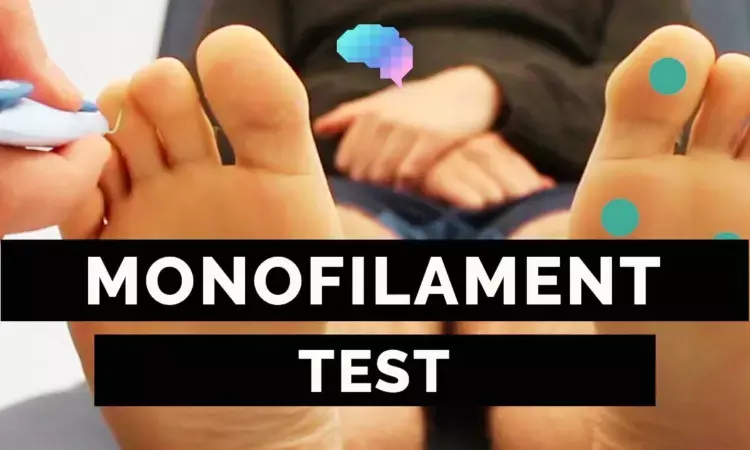- Home
- Medical news & Guidelines
- Anesthesiology
- Cardiology and CTVS
- Critical Care
- Dentistry
- Dermatology
- Diabetes and Endocrinology
- ENT
- Gastroenterology
- Medicine
- Nephrology
- Neurology
- Obstretics-Gynaecology
- Oncology
- Ophthalmology
- Orthopaedics
- Pediatrics-Neonatology
- Psychiatry
- Pulmonology
- Radiology
- Surgery
- Urology
- Laboratory Medicine
- Diet
- Nursing
- Paramedical
- Physiotherapy
- Health news
- Fact Check
- Bone Health Fact Check
- Brain Health Fact Check
- Cancer Related Fact Check
- Child Care Fact Check
- Dental and oral health fact check
- Diabetes and metabolic health fact check
- Diet and Nutrition Fact Check
- Eye and ENT Care Fact Check
- Fitness fact check
- Gut health fact check
- Heart health fact check
- Kidney health fact check
- Medical education fact check
- Men's health fact check
- Respiratory fact check
- Skin and hair care fact check
- Vaccine and Immunization fact check
- Women's health fact check
- AYUSH
- State News
- Andaman and Nicobar Islands
- Andhra Pradesh
- Arunachal Pradesh
- Assam
- Bihar
- Chandigarh
- Chattisgarh
- Dadra and Nagar Haveli
- Daman and Diu
- Delhi
- Goa
- Gujarat
- Haryana
- Himachal Pradesh
- Jammu & Kashmir
- Jharkhand
- Karnataka
- Kerala
- Ladakh
- Lakshadweep
- Madhya Pradesh
- Maharashtra
- Manipur
- Meghalaya
- Mizoram
- Nagaland
- Odisha
- Puducherry
- Punjab
- Rajasthan
- Sikkim
- Tamil Nadu
- Telangana
- Tripura
- Uttar Pradesh
- Uttrakhand
- West Bengal
- Medical Education
- Industry
Monofilament test not adequate for diagnosis of diabetic polyneuropathy, study claims

Norway: A recent multicenter study published in BMJ Open Diabetes Research & Care demonstrated that the widely used 5.07/10 g monofilament test is insufficient for the diagnosis of diabetic polyneuropathy (DPN), particularly in those with neuropathic pain (NP) and in female patients.
The test's diagnostic accuracy remained unaffected by the severity of DPN implying that it does not perform better in patients with later stages of DPN. The researchers, therefore, recommended against using 5.07/10 g monofilament in evaluating patients with diabetes referred to polyneuropathy assessments.
"The monofilament test should not be used for DPN diagnosis or as an inclusion tool in diabetes research," they suggested.
The monofilament test is widely used, but there is no clarity on its diagnostic accuracy for DPN. Further, there is a need for cheap and simple diagnostic tools for diabetic polyneuropathy. Considering this, Øystein Dunker, Department of Research and Innovation, Oslo University Hospital, Oslo, Norway, and colleagues aimed to assess the diagnostic accuracy of the 5.07/10 g monofilament test in patients referred to polyneuropathy assessments. They also examined how disease severity, sex, age, and neuropathic pain impact diagnostic accuracy.
The study included 506 patients with diabetes aged 18–70 referred to neurological outpatient clinics for polyneuropathy assessments in five Norwegian university hospitals. Validation of the 5.07/10 g Semmes-Weinstein monofilament examination (SWME) was done against the Toronto consensus for DPN diagnosis.
The results were stratified by sex, age, and NP. Disease severity was graded by a combined nerve conduction study (NCS) Z-score, and whether disease severity was a predictor of diagnostic accuracy was assessed using logistic regression.
Of the total 506 patients (199 females; 307 males), 66% had confirmed DPN by the reference standard, and 54% had neuropathic pain.
Based on the study, the researchers reported the following findings:
- Global sensitivity was 0.60, specificity 0.82, positive and negative predictive values were 0.86 and 0.52, respectively, positive and negative likelihood ratios were 3.28 and 0.49, respectively.
- The SWME was less sensitive in females (0.43), had lower specificity in patients with NP (0.56), and performed worse in patients ≥50 years.
- NCS-based disease severity did not affect diagnostic accuracy (OR 1.15).
"We show that the monofilament test is particularly unsuitable for female patients and patients with neuropathic pain and that disease severity does not impact the test’s diagnostic accuracy," the researchers wrote. "Future studies on SWME should properly assess whether monofilaments that exert less pressure may be more suitable for female patients; a course change could also be warranted as modern point-of-care devices become more affordable."
"We do not recommend using 5.07/10 g monofilament as a stand-alone test, nor as part of a test battery in evaluating patients with diabetes referred to a polyneuropathy assessment, they concluded.
Reference:
Dunker Ø, Uglem M, Bu Kvaløy M, et alDiagnostic accuracy of the 5.07 monofilament test for diabetes polyneuropathy: influence of age, sex, neuropathic pain and neuropathy severityBMJ Open Diabetes Research and Care 2023;11:e003545. doi: 10.1136/bmjdrc-2023-003545
Dr Kamal Kant Kohli-MBBS, DTCD- a chest specialist with more than 30 years of practice and a flair for writing clinical articles, Dr Kamal Kant Kohli joined Medical Dialogues as a Chief Editor of Medical News. Besides writing articles, as an editor, he proofreads and verifies all the medical content published on Medical Dialogues including those coming from journals, studies,medical conferences,guidelines etc. Email: drkohli@medicaldialogues.in. Contact no. 011-43720751


